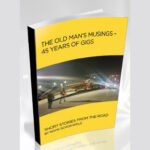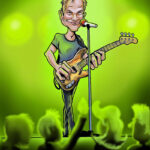Have you ever been so excited about something related to work that it was all you could think about? In this business, I hope that happens a lot because we do some pretty amazing stuff. When I first learned that our very own columnist, Vickie Claiborne, was planning to write a book, I got chills! First it was the fact that one of our own was publishing another book. Doesn’t that speak highly of the columnists that we have on staff? Second was the subject of the book — Media Servers and how to program them — a groundbreaking and important topic.
Filling a Niche
As I’ve reminded PLSN readers time and again, video is not my strong point. Because it has become such a prominent part of live entertainment visual production, that, of course, needs to change. Fortunately for me, I don’t have to learn everything from scratch. I still have a long way to go before my understanding of video comes close to what experts in the field like Vickie know, but thank goodness for her book and “Video Digerati” column. My understanding of media servers and video has come a long way.
Vickie’s title, Media Servers for Lighting Programmers, spells out pretty clearly who she wrote the book for and what it covers. By pairing video technology with lighting crew members, it also speaks to the convergence of lighting and video. As she notes in the book, as the division between lighting and video becomes almost nonexistent, it’s more important than ever that lighting programmer expand their know-how to the world of media servers and all the protocols, signals, products and video data connections associated with them. Lighting programmers need to go beyond individual fixture control and bring digital light sources, projectors and video screens to life.
The book clearly walks a programmer through the steps of understanding what a media server is, the process of setting one up, preparing media and hooking up a system for maximum potential.
I found myself not being able to put the book down. At every opportunity I had, I cracked the spine and began poring over the various topics from understanding the various types of media servers to the differences in cables/connector types and preparing media for playback. I got so wrapped up in the book that while reading it on the subway, I missed my stop once or twice.
Vickie does an excellent job detailing some of the process of video manipulations, codecs and preparing a media server for a gig. She also provides examples from the multitude of media servers available on the market. At times, I felt that some things were dumbed down. That is only because I have had some experience with some of the topics she talked about, such as setting up a console correctly. In other sections, I felt like the dummy. I had no idea that there were different types of DVI connectors and that they offered different signals over what looks like the same connector. Something I never really thought about before reading the book, the video transmission over lengths of the various cable types. If you have never heard of SDI, (Serial Digital Interface), Vickie explains the immense performance properties of sending video over the broadcast quality cable and connector.
The book takes all the subjects back to the beginning for just that reason. You may know some of the topics, but the others might be real eye openers. At times I felt like there should be a deeper explanation on various approaches, such as 3D mapping and time coding. That is me being greedy and wanting to learn more about the subject on a specific media server.
That sort of topic goes beyond the scope of the book and is left for the reader to explore more about a specific media server through the manufacturers website or user manual. Vickie does an excellent job giving an overview of specific topics from the various media servers and leaves more advance learning to the reader.
Copyright and Protection
One thing that clearly stood out throughout the entire book is the media a designer has available to them. While most media servers offer stock content that is licensed to use in almost any production, there are times when custom content is required. Vickie has a chapter dedicated to media creation and another devoted to the importance of copyright protection and digital content.
Digital content is a personal and job specific thing. Great care should be taken to protect you and your client from unwanted lawsuits over copyrighted material. Going to YouTube or some other video sharing website is not a good idea for finding content for playback during a performance. Vickie helps the reader understand how to protect yourself and find and/or create content that will make a show look amazing while keeping the federales off your back.
At a Glance
For Programmers, By a Programmer
If you are a programmer and know your way around a lighting rig or early in your professional career, this book is aimed directly at you. It’s written by one of the best in the field.
With any book, a seasoned professional can learn something as well. Maybe a new way of thinking or a trick to refine your workflow. Everyone can learn something from this book. I sure did.
About Vickie Claiborne
Vickie is a lighting and digital media production specialist for PRG Las Vegas and a Columnist with PLSN Magazine. Her background in lighting design and programming, digital media design and programming, and lighting console training spans 20 years in the lighting industry.
Media Servers for Lighting Programmers
Author: Vickie Claiborne
Publisher: Focal Press
Pages: 248
Publication Date: March 2014
Price: $39.95


